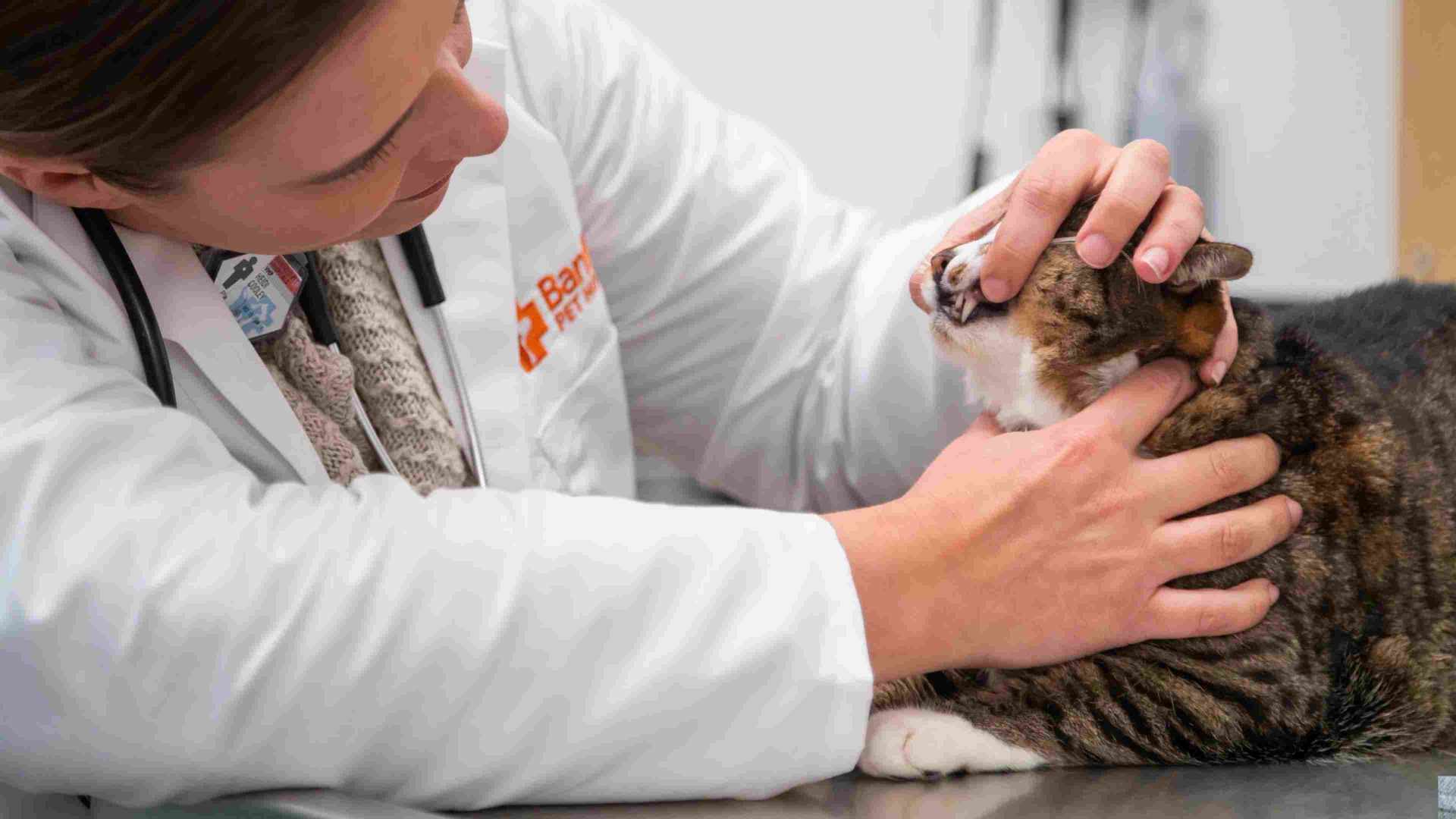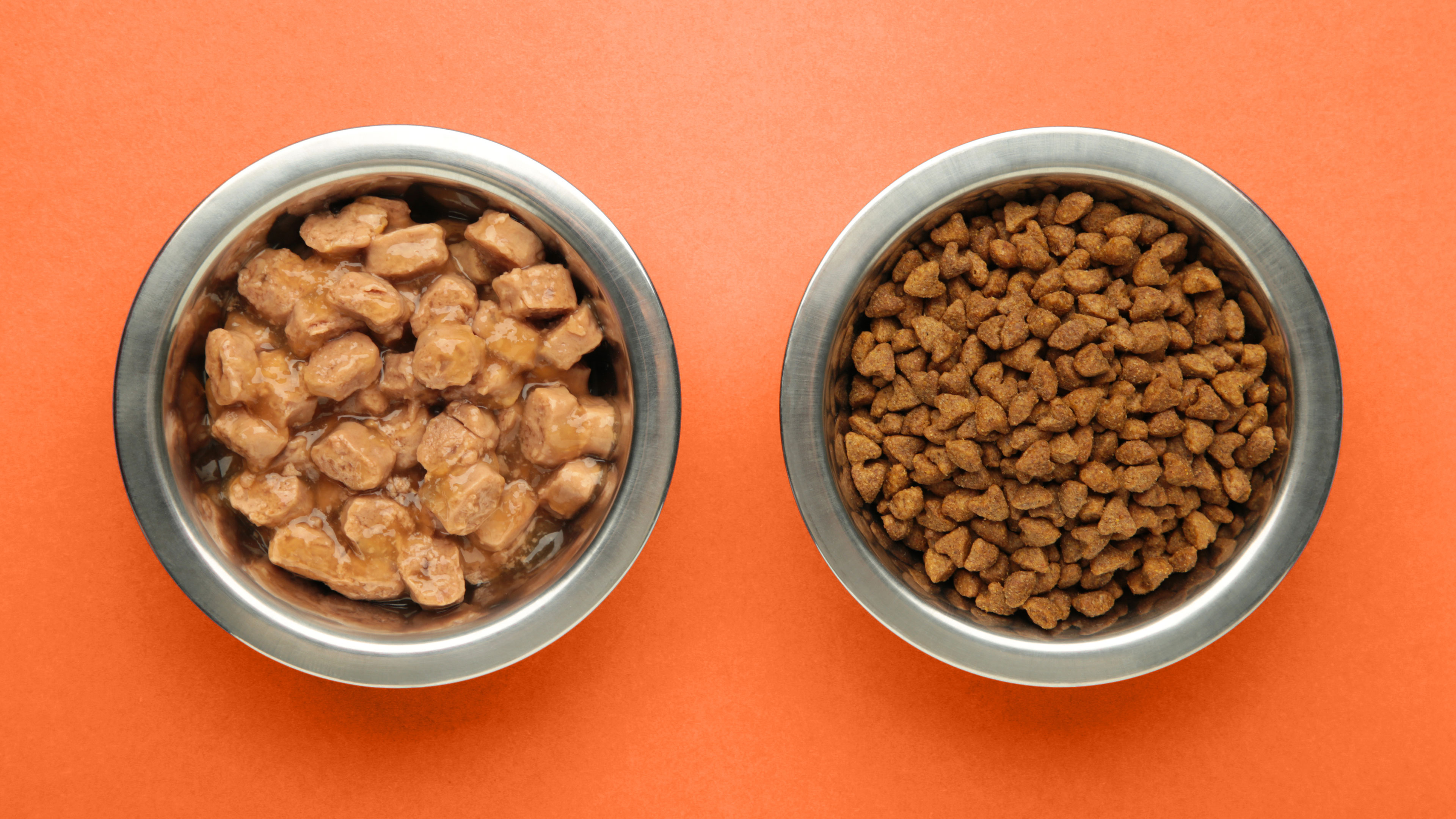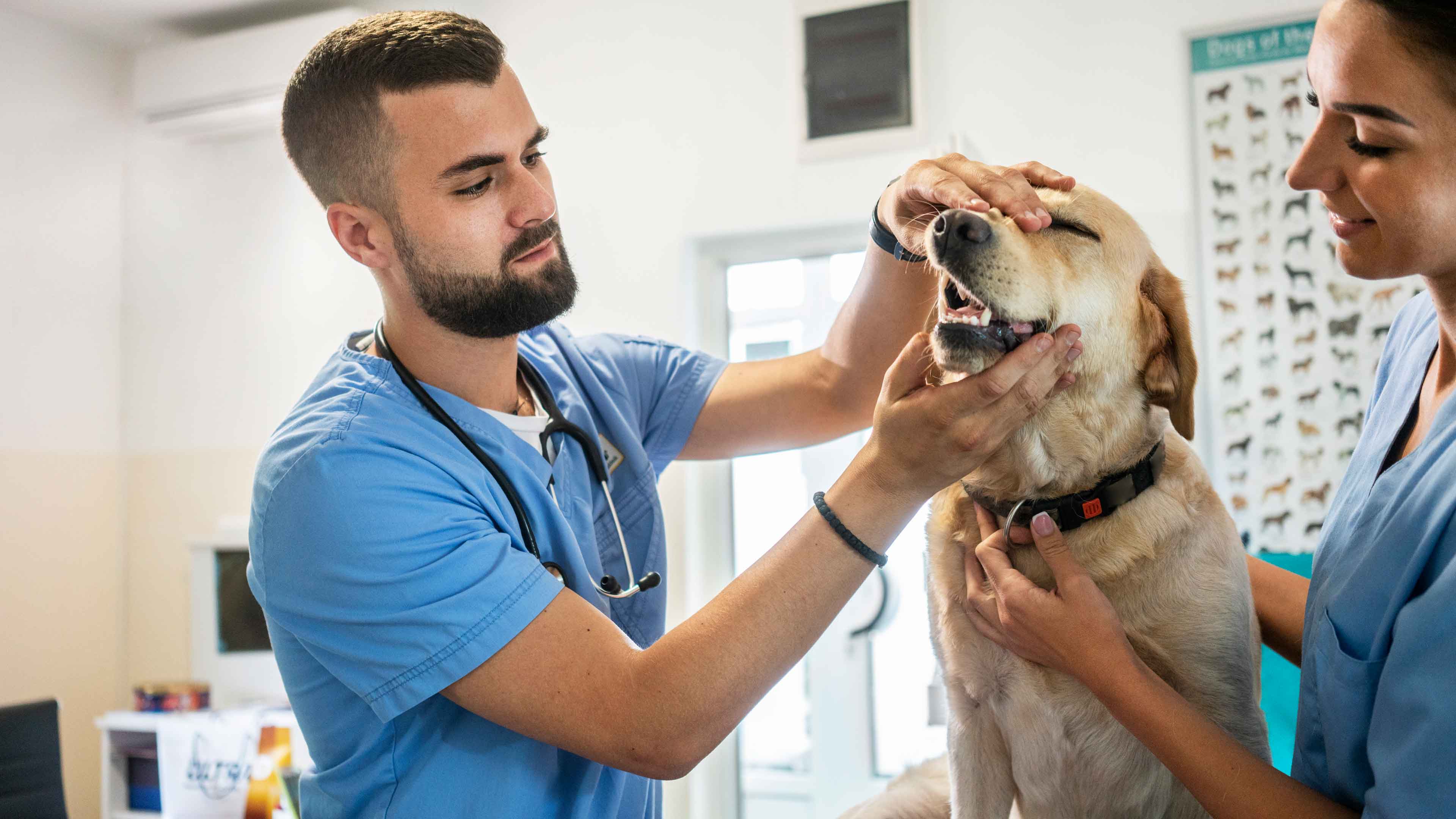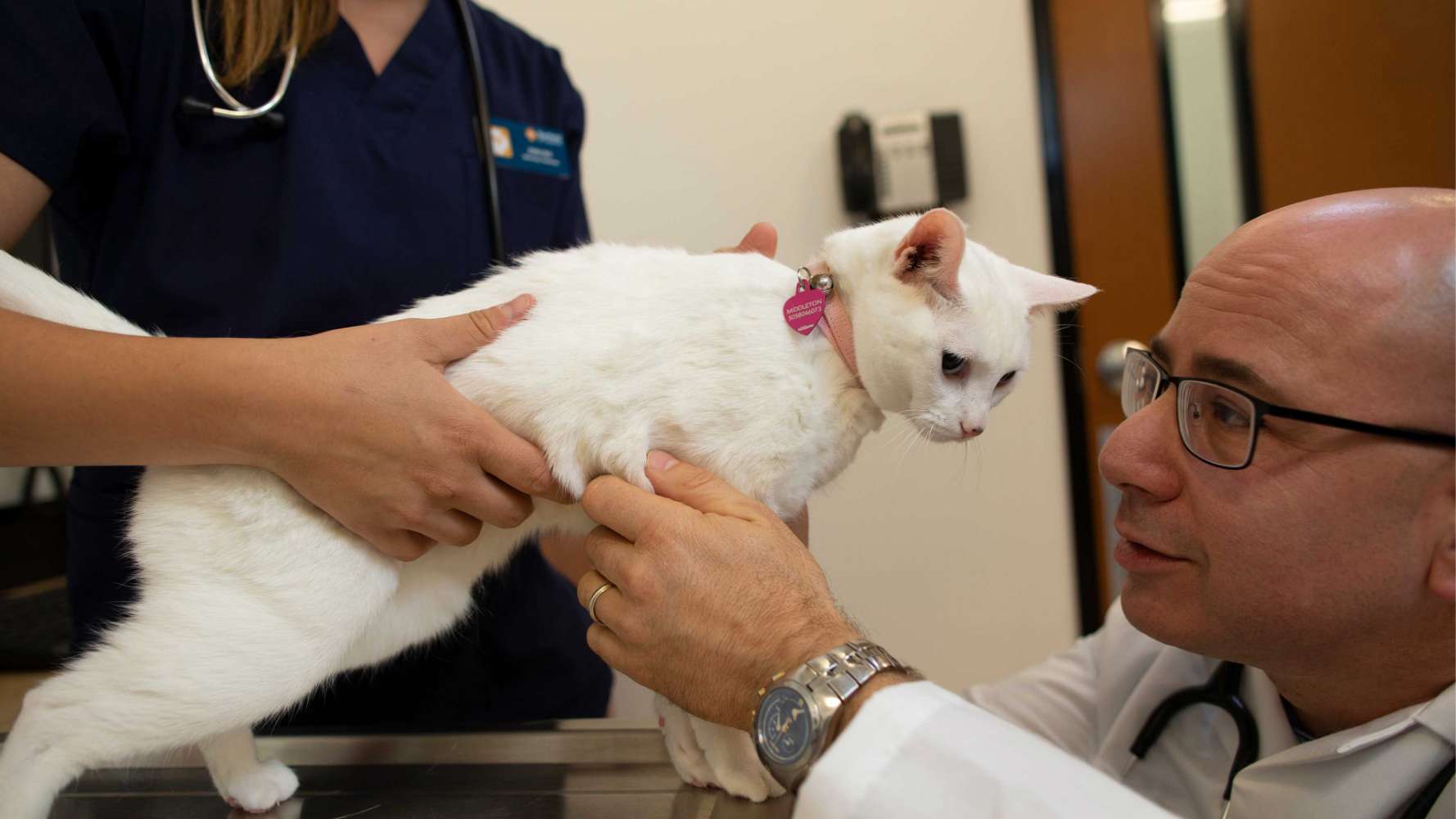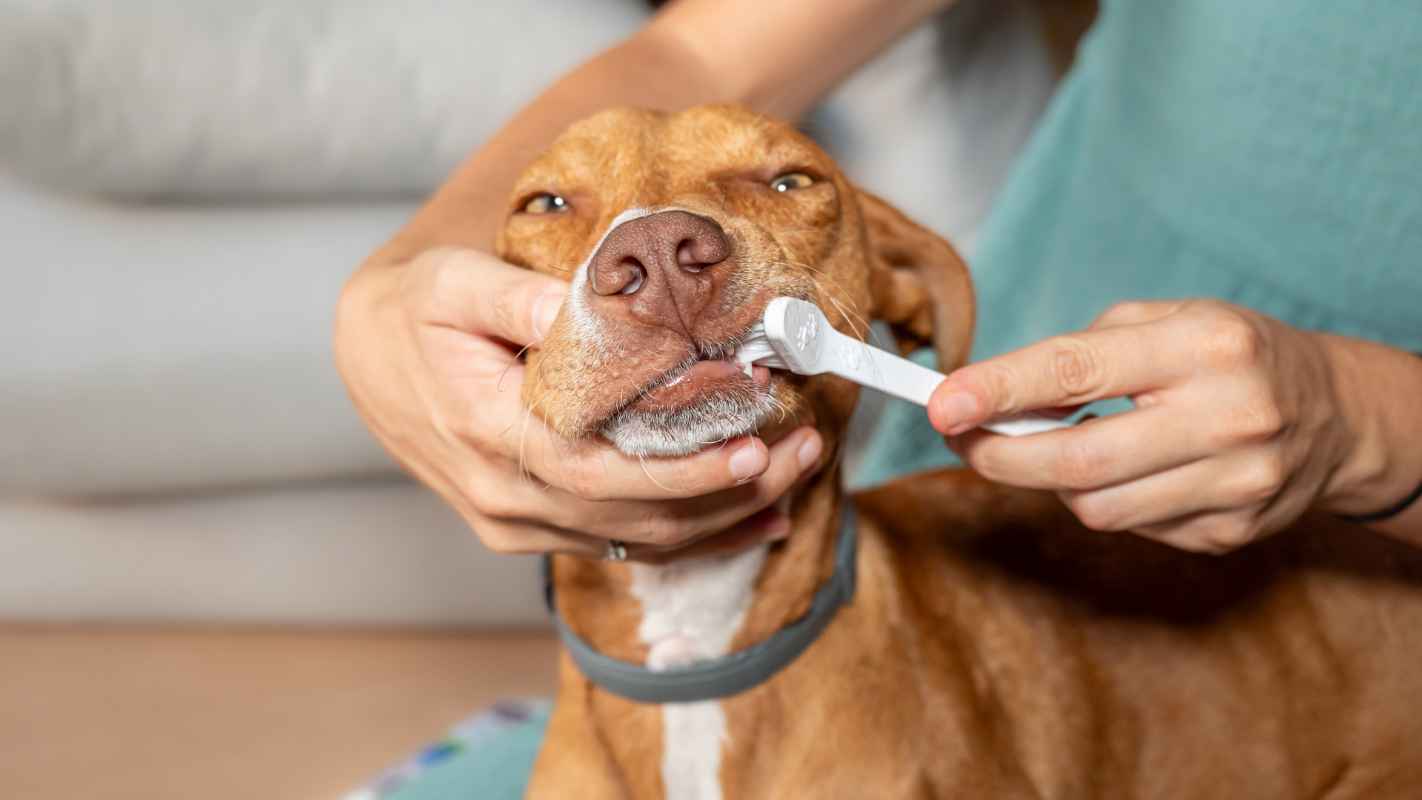open wide for dental health, kitty cats
Everything about cats is cute. Their morning meows. The way they sit, and the way they curl up on the couch for a nap. The meticulous way they clean themselves, even in between the toes.
Even their teeth and gums are cute. Unfortunately, though, because they can’t brush their own teeth, 70% of cats develop signs of gum disease by the time they’re three. But with some effort and a lot of love, you can help.
Brush those cat teeth
Believe it or not, it is possible to brush your cat’s teeth regularly. Admittedly, if your cat hasn’t been taught about the pleasures of tooth brushing at an early age, it might be a bit challenging to get started later in life. Start small, be gentle and consistent, and make sure you aren’t stressing out your feline friend — or yourself. Remember, even a little wiping on the side of a tooth is better than nothing at all, and it’s a start. You can also ask your Banfield veterinary team for tips and tricks.
What kind of brush? You want to use a moisturized cat toothbrush with soft bristles, but when you’re first getting started, you might just want to use a piece of moistened gauze to wipe the sides of the teeth.
What kind of toothpaste? Buy pet toothpaste, only. The flavor choices are hilarious from a person’s perspective – poultry-flavored toothpaste is definitely not something you and your cat are going to share. But that’s the point. You need toothpaste that’s made for cats, not people. Never use human toothpaste, baking soda, or salt, all of which can be harmful if swallowed, or unpleasant for your cat even if it isn’t.
How often? Every day would be ideal, but that’s a bit optimistic. More realistically, aim for “as often and regularly as possible.”
What’s are some secrets to success? Find a comfortable place (your lap, a table, or other piece of furniture; if your cat’s way of letting you know she’s done is by scratching, your lap might not be the best place for this.) Give your cat a small sample of the pet toothpaste before getting started. Then gently lift their lip so you can access their gums and teeth. Brush with gentle motions, focusing on the outward-facing surfaces (most cats won’t let you brush the insides), and do your best to brush those back upper teeth, too.
Schedule a professional teeth cleaning at least once a year
Regular home oral care, along with professional cleanings, can help slow gum disease and tooth decay before they start. Choose a Banfield Optimum Wellness Plan® that includes a dental cleaning to help keep the pet you love healthy and happy. You’ll get a year's worth of preventive petcare services, including physical exams and vaccinations, at significant savings.
 Mites and mange
Mites and mange Podcast - Not Just Fluff
Podcast - Not Just Fluff
